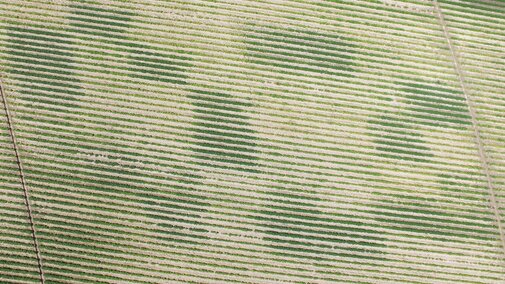Proper soil management is necessary to sustain long-term agricultural productivity. Soil loss through erosion or run-off hurts agricultural production and has environmental implications. Many fields in the Nebraska Panhandle have been leveled for irrigation, intensively farmed, or have been affected by wind and water erosion, all of which can decrease soil organic matter (SOM). Low SOM is a significant indicator of a degraded soil.
Plants grown on degraded soil are prone to less vigorous foliar growth, chlorosis, poor root development, and poor emergence due to soil crusting. Furthermore, lighter colored soils low in SOM warm up more slowly and have less potential to produce nutrients from mineralization. Many intensively cultivated soils in the Great Plains have lost 30% to 50% of the original SOM level.
It appears that char, a by-product from Western Sugar Cooperative processing plants, has potential to improve soils in the region. Char is a coal combustion residue. Unlike coal ash from a regular coal-powered power plant, char has 30% carbon by weight as well as other nutrients beneficial to crops. Trace metal content in char is below EPA’s loading limit. Char is also different from biochar, which is produced by pyrolysis (burning without oxygen) of biomass. Biochar has a higher carbon content, sometimes above 80%, but it would be cost prohibitive to use biochar in agriculture, as, at this point, there is no production to supply biochar in large quantities.
Nebraska Research on Char
2017 Study in Dry Edible Bean. Aerial imagery early in the season in 2017 revealed encouraging evidence of char as a potential soil amendment in a dry edible bean field near Scottsbluff (Figure 1). The soil of the char trial was calcareous, sandy loam, and had less than 1% SOM. The trial was in an area under center pivot irrigation that has low productivity compared to the rest of the field, probably due to the leveling of the field at some time in the past.
The image was taken in mid-July 2017, following char application in mid-May. The same year dry bean yield increased by 12%-52% with char application at various rates (10, 20, 30, 40 and 60 ton/ac). However, the only statistically significant yield increase occurred on the plot where 60 tons of char was applied. In 2017, spring was cool and wet and there were chlorosis issues. Char may have improved aeration, infiltration, and other soil physical processes and that could have led to some beneficial effects. It will require at least a few years of monitoring of this field to document any other significant benefits of char with respect to agronomic productivity and soil properties.
Because of costs associated with transport and field application, the chosen rate of char should be economically feasible. Comprehensive economic analysis is warranted to address the feasibility and potential use of char on agricultural land.
2016 Studies in Two Crop Rotations. Another char study was initiated in 2016 in a wheat-corn-pea rotation system at the High Plains Ag Lab in Sidney and a corn-beet-corn-dry bean rotation system at the PHREC Mitchell Ag Lab. Neither trial showed harmful nor beneficial effects on crop yield in the first year of char application. At both sites, char application increased total carbon in the soil but had small or no effects on other soil properties. At the Mitchell site, numerous soil-active herbicides were applied to study if adding carbon may interfere with weed control practices. Regardless of char rate, there was no evidence of char applications influencing the efficacy of soil-applied herbicides. In the second year (2017) following char application, dry bean in Scottsbluff and peas in Sidney showed yield increases with char. In both cases, yield increase plateaued at about 20 ton/ac of char.
Long-term Evaluation
For any effort in soil and water conservation, it could take a number of years to improve soils enough to eventually enhance yields. We will continue our research to evaluate short- and long-term effects of char on soils and crop production.

